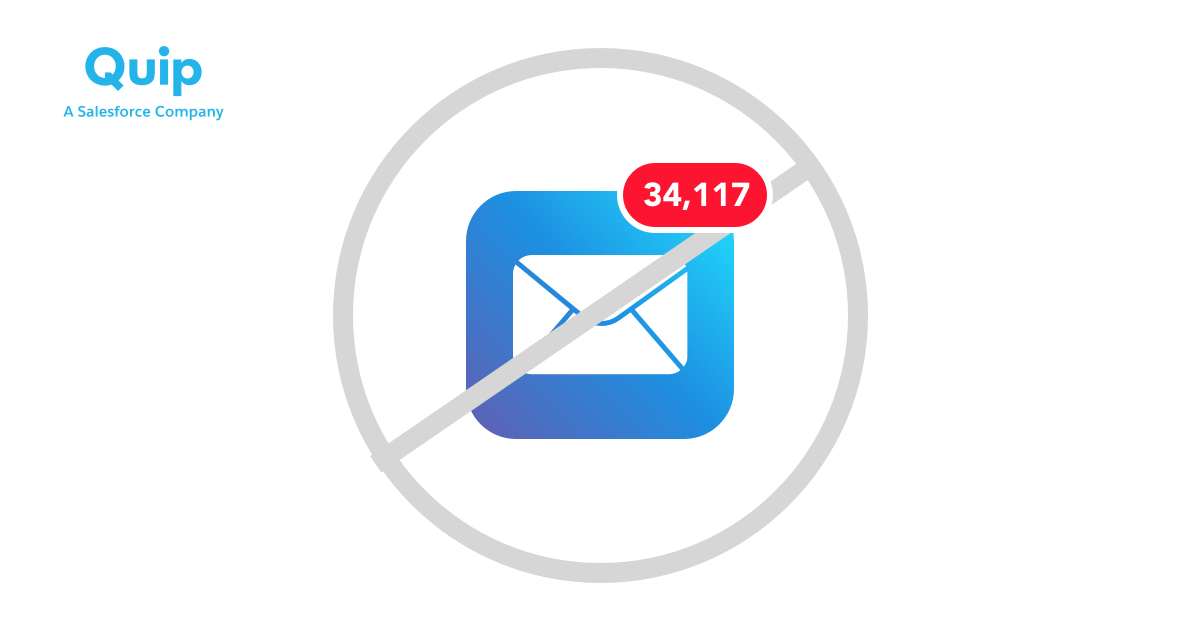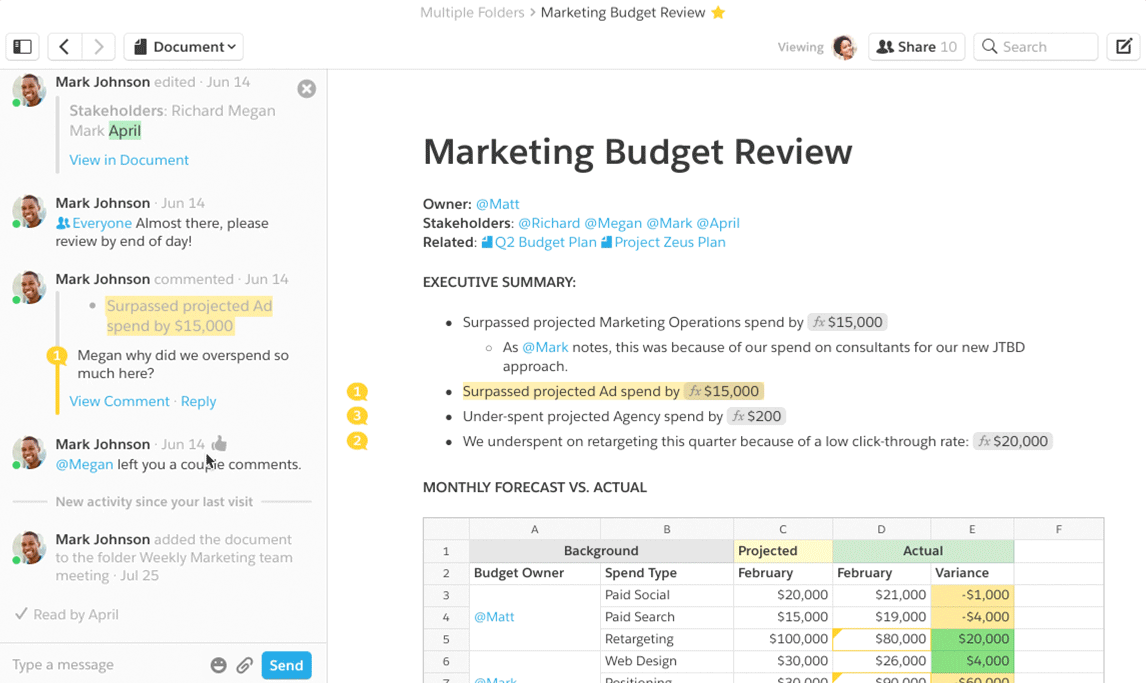Why you don't need email to get your job done

Human connection is at the core of every business. Whether you're engaging with coworkers, managers, staff, customers, or partners — for anything to get done, people need to communicate with each other. The buzzword for these activities is collaboration, which of course means we have collaboration software (and a lot of it). This might be the part of the blog post where I'd be expected to say, “And this is where Quip comes in.” But it's not.
Quip is more than just collaboration software: It's communication software that doubles as an incredible place to get work done. This is important because work is communication. But in the collaboration tools most teams are using today, communication is an afterthought. By default, they rely on email to do the communication portion of the work, and that hurts teams. Every time you do something with a document or spreadsheet, you then have to shift your focus to communicate about it in email. You have to send a file attachment. You have to ping someone a link to your doc in a chat. It slows teams down just as much as it trips them up; projects stall out and context gets lost. Quip gives teams a way around this, though; a new way to work, that re-imagines productivity and collaboration through the lens of communication.
Quip doesn't use email internally
We don't send each other emails. We also don't use any chat apps. One hundred percent of the work we do — meeting notes, product design, marketing campaigns, recruiting, sales planning — happens in Quip. And so does the conversation about all that work. Every single employee at Quip came from a company where email was the primary mode of communication, but now, none of us use it. It's more than just loyalty — we're all really happy about the way we work, not to mention highly productive.
How can this be?
It's because Quip drives a major shift in the way teams communicate. When a team is fully on Quip, all of the work — and all the conversation about that work — happens in the same place. It's a full-circle productivity and communication ecosystem. When you get feedback on your work, that's not just a figure of speech — the feedback is literally on your work, in highlighted comments and a conversation happening right there in the document. You get a notification because you have the document marked as a favorite, or because your teammate @ mentioned you.

It's hard to overstate how much better this is than a bullet list in an email that has to fight for attention among your 75 other updates that day. Or comments that you don't see for several days, because the notification got buried in your inbox within an hour (and you were busy working in four other apps anyway). The building blocks of daily work that we used to find in several different places — word processing and spreadsheet files, feedback and edits, strategy and decision-making, plans and roadmaps, one-on-one and group chats — all of these things are now in one place.
Do we use email externally, though?
When working with people outside of Quip, email is sometimes unavoidable. We use email when communicating with candidates, and certain vendors and partners prefer to stick with email as well. But Quip is built for external collaboration, and we use it that way often.
For instance, there's a design agency we work with closely. For every project we spin up with them, there's an overview document with checklists, @ mentions, due dates, spreadsheets, and a document conversation. We link off to other sub-documents, organize things in folders, and have 1:1 and group chats — all with an external party. Another great example is Quip's actual sales prospects: Our reps manage most of the sales cycle and all of new customer onboarding directly in Quip. This is all possible because Quip lets you share anything you want externally: documents, spreadsheets, folders, and chat rooms.
Try it yourself
Email was built in — and for — a different time. We don't need clogged inboxes and jumbled file attachments to do our jobs anymore. Quip is built to pave the way into a new generation of productivity.
Get started today
Try Quip with your team now — create a free site in minutes.
